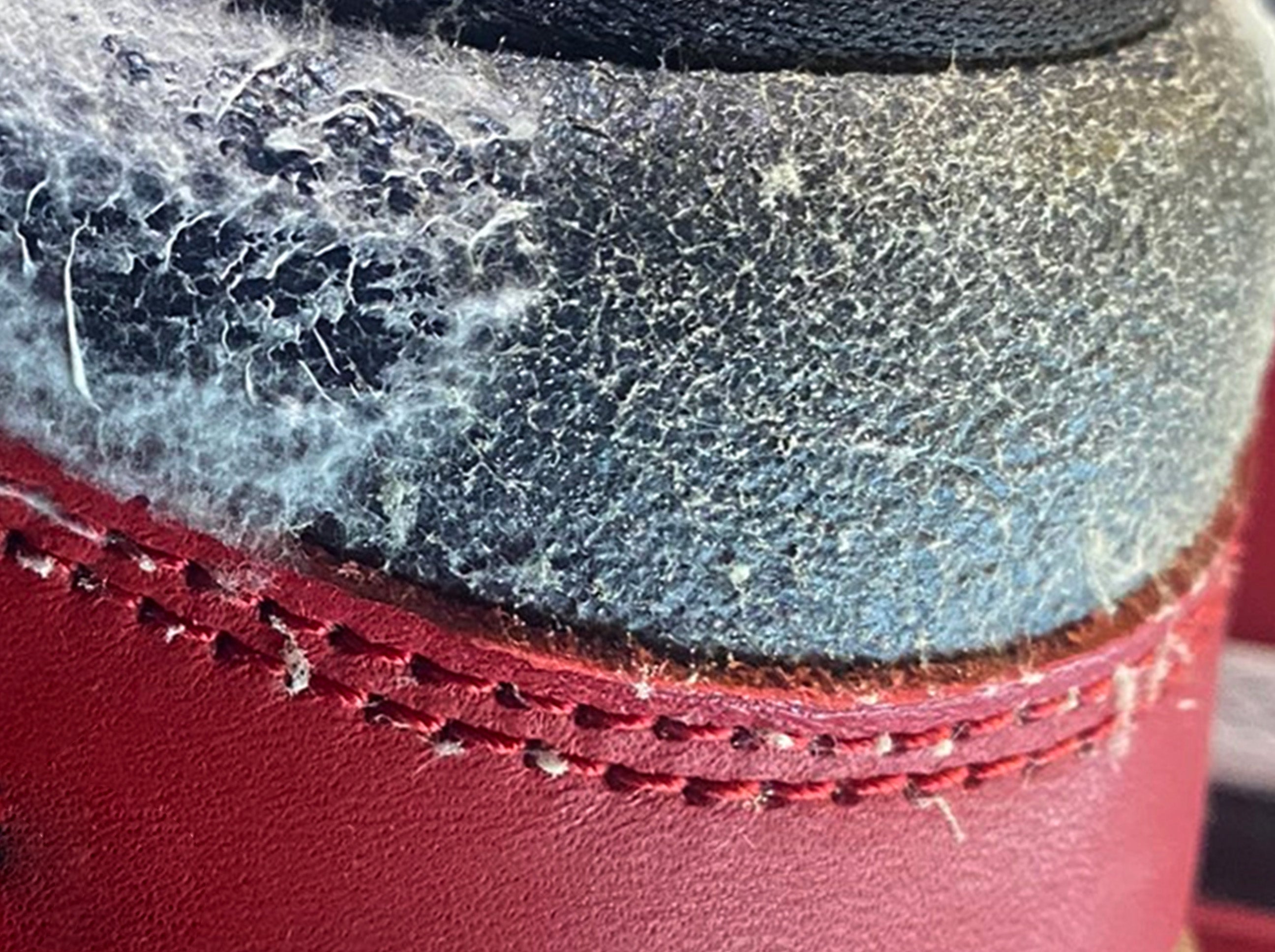Are your favorite shoes developing mold? Discover what causes mold on footwear and how to keep your shoes in pristine condition.
What Causes Mold on Shoes?
Mold growth on shoes can be a frustrating and unsightly issue for footwear enthusiasts. Understanding the causes of mold is crucial to preventing its development. Mold thrives in damp and humid environments, and shoes can become breeding grounds for this fungus if not cared for properly. Here are some primary reasons why mold develops on shoes:
1. High Humidity Levels
When the air is saturated with moisture, it creates an ideal environment for mold to flourish. Humidity levels above 60% significantly increase the chances of mold growth. In places with a humid climate, such as Florida or Louisiana, shoes stored without the right precautions are more prone to mold.
2. Improper Storage
Storing shoes in a dark, damp closet can lead to mold growth. It is essential to keep your footwear in a well-ventilated area. Enclosed shoe boxes without ventilation can trap moisture, creating a prime condition for mold.
3. Moisture Retention from Wear
If you wear shoes that are already wet or sweaty, and do not allow them to dry properly, they can quickly become a mold habitat. Moisture trapped inside the shoes can mold the insoles and inner lining.
Case Study: The College Student’s Sneaker Dilemma
Consider Jake, a college student who often rushes to classes with little time to spare. After a rainy day, he left his sneakers in the back of his closet, forgetting about them for weeks. By the time he retrieved them, the sneakers were not only smelly but also covered in black mold. Jake’s experience illustrates how mold can silently grow when shoes are improperly stored and not dried out.

Signs of Mold on Shoes
Recognizing the signs of mold on your footwear early can save you from extensive cleaning or replacement costs. Here are some indications that mold may be present:
1. Visible Mold Spots
One of the first signs of mold on shoes is the appearance of discolored spots, usually green, black, or white. These spots can be fuzzy or powdery in texture.

2. Musty Odors
If your shoes start emitting a damp, musty smell, it could be a warning sign of mold growth. This odor is often a precursor to visible mold.
3. Discoloration on the Sole and Lining
In addition to visible spots on the outside, check the shoe’s lining and insole. Discoloration or a change in texture can indicate that mold is present.

Prevention Tips for Mold-Free Footwear
Preventing mold growth on shoes is more effective than dealing with it after the fact. Here are some practical tips to keep your footwear mold-free:
1. Allow Shoes to Breathe
After wearing your shoes, especially if they are sweaty or wet, allow them to air out in a dry area. Avoid putting them in enclosed spaces immediately after use. Using a shoe tree can help maintain the shape and allow ventilation.

2. Use Moisture Absorbers
In humid environments, consider using moisture-absorbing products such as silica gel packs or activated charcoal bags in your storage area. These products help reduce humidity levels and keep your shoes dry.
3. Store Properly
Store shoes in a cool, dry place. Instead of leaving them in a closet that might be prone to humidity, consider using a shoe rack in a well-ventilated area. Also, avoid plastic boxes that can trap moisture.

Product Highlight: Dehumidifying Bags
Investing in dehumidifying bags can save your shoes. They are easy to use: just hang them in your closet or place them in your shoe box. Brands like “Dry & Dry” and “Eva-Dry” are popular options for keeping shoes dry.
How to Remove Mold from Shoes
If you discover mold on your shoes, acting quickly is important. Here is a step-by-step guide to removing mold safely and effectively:

1. Gather Supplies
You will need white vinegar or rubbing alcohol, a soft brush or cloth, and warm soapy water. Optional items include baking soda and hydrogen peroxide.
2. Brush Off Loose Mold
Take the soft brush and gently remove any loose mold from the surface of the shoes. Be careful to do this outdoors to avoid spreading mold particles in your home.

3. Create a Cleaning Solution
Mix equal parts white vinegar or rubbing alcohol with warm water. This solution has antifungal properties that can help kill mold spores.
4. Clean the Affected Areas
Using a cloth soaked in the solution, wipe down the affected areas of the shoes. Repeat this several times as necessary.
5. Dry Thoroughly
After cleaning, allow your shoes to dry completely in a well-ventilated area. Avoid direct sunlight, as it can damage certain materials.
Pros and Cons of DIY Mold Removal
| Pros | Cons |
|---|---|
| Cost-effective | Time-consuming |
| Natural cleaning agents | May not remove deep-set mold |
| Easy to do at home | Risk of damaging shoes if not careful |
Real-World Footwear Experiences
Hearing from others who have faced mold issues with their shoes can provide valuable insight. Here are a couple of real-world experiences:
1. Sarah’s Stiletto Saga
As a fashion blogger, Sarah adored her collection of stilettos. However, after a summer trip where she stored her shoes in a humid hotel room, she noticed mold on her favorite pair. She shared her story on her blog, emphasizing the importance of drying shoes properly after wear. Sarah successfully removed the mold using a vinegar solution and recommended that others never store shoes in humid environments.
2. Mark’s Hiking Boots Horror
Mark, an avid hiker, returned from an unforgettable trip in the Pacific Northwest only to find his beloved hiking boots covered in mold from moisture. After consulting online forums, he learned about proper storage and moisture control methods. Mark now uses moisture absorbers and shares the importance of ensuring boots dry completely after every adventure.
FAQs About Mold on Shoes
1. Can mold on shoes be harmful?
While not all molds are harmful, some can trigger allergic reactions or respiratory issues. It’s best to clean or dispose of moldy shoes to avoid health risks.
2. How can I prevent mold in my closet?
Keep your closet well-ventilated, use dehumidifiers, and avoid storing damp clothing or footwear inside.
3. Is it safe to wear shoes with mold on them?
It is not advisable to wear moldy shoes as this can exacerbate health issues. Always clean them first to ensure they are safe for use.
4. Can certain materials be more prone to mold?
Yes, materials like leather can become moldy if not treated properly, while synthetic materials may be less prone to mold but can still harbor moisture.
5. What is the best way to store shoes to prevent mold?
Store shoes in a cool, dry place and consider using moisture-absorbing packs or breathable shoe bags to help maintain a dry environment.
6. How often should I check my shoes for mold?
Inspect your shoes periodically, especially if they are stored in areas prone to humidity. Regular checks can help catch mold before it spreads.
7. Will washing my shoes remove mold?
Washing may help remove surface mold, but it may not penetrate deep into the material. It’s best to use antifungal solutions for thorough cleaning.
8. How do I know if my shoes are mold-resistant?
Some brands market mold-resistant shoes specifically designed to combat moisture retention. Look for shoes made with moisture-wicking materials.
9. Can I use bleach to remove mold from shoes?
Bleach is not recommended for cleaning shoes as it can damage some materials. Instead, use natural solutions like vinegar or rubbing alcohol.
10. Is it better to throw away moldy shoes?
If mold is extensive and the shoes are damaged beyond repair, disposal might be the best option. Otherwise, many shoes can be salvaged with proper cleaning.